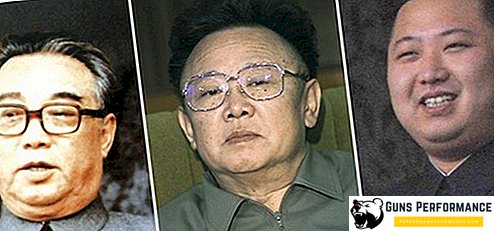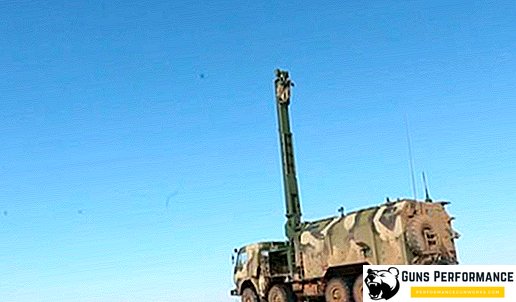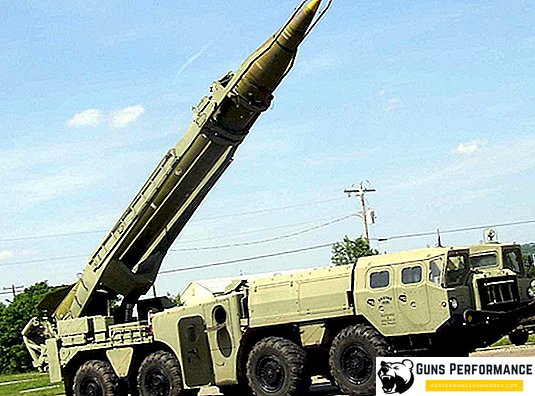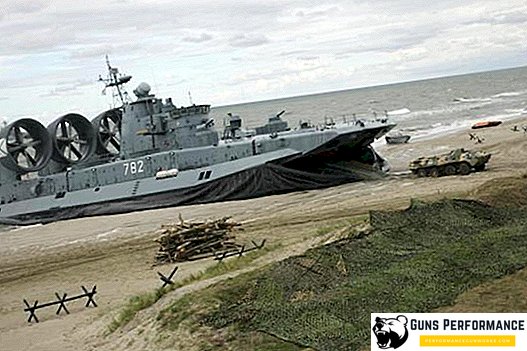An-72 is a light jet military transport aircraft with a short take-off and landing. The An-72 aircraft was designed by the Antonov Design Bureau in Kiev in order to update the aging An-26 equipment fleet. The initiator of work on this aircraft, which uses an unconventional method of increasing the lifting force, was the General Designer himself. The feasibility of such a decision of the future machine O.K. Antonov described it this way: a stream of gases, flowing at high speed from the engine, will pass over the wing, forming an additional lift. This method was based on the Coanda effect, named after the author and patented in 1932.

The An-72 cargo plane was created for the transportation of troops, the landing of assault forces, the movement of weapons, ammunition and other materiel. There is also a patrol modification of the An-72P, used to patrol coastal territorial waters and economic zones. The aircraft also has civilian modifications.

Appearance history
The development of the An-72 military transport began with the goal of replacing the turboprop An-26 in 1972 as an initiative in the Antonov Design Bureau. Y.G. Orlov was appointed as the lead designer. As a power plant, it was decided to use the DTDD D-36 Zaporozhye ICB Progress, the dimensions of which were the only ones that were suitable in dimension. For the beginning of the design, the joint decision of the Air Force, MGA and MAP of May 27, 1974 became the official basis. Already in May 1975, the model of the future of the An-72 was demonstrated to the commission headed by P.V. Bazanov.

In June 1976, the Resolution of the Council of Ministers of the USSR was issued, as well as the Central Committee of the CPSU No. 558-186 on the creation of the An-72. The novelty was required to ensure a short take-off and landing. For this purpose, the wing was equipped with advanced mechanization. In order to increase the lift force of the wing during takeoff, the designers decided to blow the flaps of the engine with exhaust jet using the Coanda effect. In addition, the high location of the engines protected them from various foreign objects, which was important while stationing on unpaved airfields. The use of an automated navigation system, which is associated with the radar, allowed the crew to abandon the navigator, which was the first time on a Soviet military transport aircraft.

In 1977, the first cargo prototype was built at the Kiev Aviation Plant. His first flight was performed under piloting test pilot V.I. Tersky on August 31, 1977. In the same year, they began flight tests of the second prototype. At the Kiev Aviation Plant in 1978, they began to prepare for mass production. It was produced 5 An-72, but because of the load of the enterprise, the production of An-72 was transferred to the Kharkov aircraft plant. During the development of production, technical changes were made to the design in order to increase the flight range. As a result, the wingspan was increased by 5.4 m, the fuselage was extended by 1.4 m. At the same time, the take-off weight increased by 10 tons, the speed decreased, and also the take-off and landing characteristics deteriorated slightly. In 1979, at the aerospace show at Le Bourget, the An-72 was first shown to the public. The first serial An-72 took off into the sky in 1985, in December.
Specifications
An-72 aircraft has the following specifications:
- Engines - D-36.
- Take-off thrust is 2x6500 kgf.
- Wingspan is 31.89 m.
- The length is 28.068 m.
- The height is 8.65 m.
- The wing area is 102 m2.
- Overall length (without ramp) of the cargo compartment is 10.50 m.
- Overall width (by floor) of the cargo compartment is 2.15 m.
- The overall height of the cargo compartment is 2.20 m.
- The mass of the empty aircraft is 19.05 tons.
- Normal takeoff weight is 27.5 tons.
- Take-off maximum weight is 34.5 tons.
- Fuel capacity is 12950 kg.
- The maximum payload mass is 7,500 kg.
- The maximum speed is 720 km / h.
- Cruising speed is 550-600 km / h.
- The flight range with maximum load is 1000 km.
- Ferrying range is 4300 km.
- The practical ceiling is 10,100 m.
- The runway length is 620 m.
- The path length is 420 m.
- The crew is 3 people.


Design features
- Designed with the installation of engines above the wing, to use the Coanda effect - the growth of lift by means of "sticking" the exhaust jet to the wing. It is distinguished by a highly mechanized wing with trapezoid arms and a straight center section. Equipped with an efficient bucket-type reverse, powerful chassis with independent suspension pillars and a cargo carrier with a ramp.
- An-72 all-metal construction, composite materials are widely used. Sealed fuselage, semi-monocoque type, round section. Wing large elongation, swept, trapezoidal in plan. The wing is mechanized using interceptors, slats, three-slotted cantilever and two-slotted center planar flaps. Slat equipped and stabilizer. Internal flap sections are blown out with gas jet engines.
- Five-support chassis, retractable (4 main and 1 nose strut). The power plant includes VSU TA-12 and 2 TRDD D-36. In the rear fuselage there is a large cargo door, it is closed by a ramp, which can move under the bottom or fall to the ground. The cargo cabin is equipped with mooring devices, crane beams, folding seats for placement along the sides of the paratroopers.

Modifications
- An-72-100 - civil transport aircraft.
- An-72-100D - cargo-passenger aircraft.
- An-72V - export aircraft for Peru.
- An-72P - Marine Patrol Aircraft for Border Troops Aviation.
- An-72PS - search and rescue aircraft.
- An-72R - reconnaissance aircraft.
- An-74 - civil transport aircraft.
- An-720 - administrative aircraft ("salon").












